This afternoon I received a message from a friend in Eagle Wisconsin that said she had a hummingbird coming to her feeder this morning that she did not recognize. She thought possible Rufous. I headed out there and Anne Morretti was right behind me when I arrived. She also heard the news. The bird was there moments after we arrived on a feeder. She said she was just going to take the feeder down last Sunday but it had got put off. Danielle and Raef the property owners were anxious to find out what exact species this was. We took some photos as the sky turned grey and later rained pretty good. The Rufous continued to feed during the rain. We are assuming at this point it is a Rufous Hummingbird. I posted many images of the bird in hopes that we can ID it 100%. If anyone can call this bird something else or can find the marks to confirm it’s ID as a Rufous please let us know. I have seriously not studied the bird images yet myself as wanting to get the post up. The property owners are willing to let others in to view this beautiful bird well out it normal range. A big thank you to Danielle and Raef for getting the word out on this bird and letting others in to view it. They also had a beautiful leucistic Ruby-throated Hummingbird visit them last year, 2013 for a few days. 2 incredible birds coming to one residence. I have included an image from that event at the bottom of these images. The Rufous Hummingbird images were taken on October 23, 2014. It was another exciting birding day with 3 vagrants in just 5 days! (I have recently added an image at the bottom here of the best tail spread I have. Is it enough to confirm this bird as a Rufous)?
Rufous Hummingbird
Binomial name: Selasphorus rufus
Category: Hummingbirds
Description: Primarily rust-colored feathers with a small patch of white on the chest. Red-orange patch on throat. Short wings and a slender, slightly sloping bill.
Size: 2.8″-3.5″ long, 3” – 4” wingspan
Weight: 0.071 oz. – 0.18 oz
Habitat: Open broadleaf forests, orchards, meadows, parks, swamps, and yards
Natural Range: West Coast from Alaska to Mexico and Rocky Mountains, wintering in the Gulf Coast and Southeastern Atlantic states. They are occasionally, although rarely, found in cold-weather areas such as the Midwest due to their surprising hardiness.
Diet: Tree and flower nectar, small insects, and hummingbird feeders
Nesting: The males may mate with several females but do not care for the young. The female provides all parental care, building a nest in a protected tree or shrub. They favor either deciduous or coniferous trees such as spruce, cedar, maples, pines, birch, and hemlocks. The nest is made out of bud scales, lichen, spider silk, and dandelion or thistle down. The same nest may be used year after year and not necessarily by its previous occupant. The female will lay 2-3 eggs at a time, laying 1 brood per summer. She incubates the eggs for 15-17 days, and the young remain in the nest for 15-19 days.
Notes: This high-strung bird is considered extremely aggressive and will chase other animals from feeders or its nest including larger birds, chipmunks, and even other hummingbirds. Like other hummingbirds, Roufus Hummingbirds are adept flyers and can hover, dart, and perch with ease. They have even been seen to pluck insects out of midair.

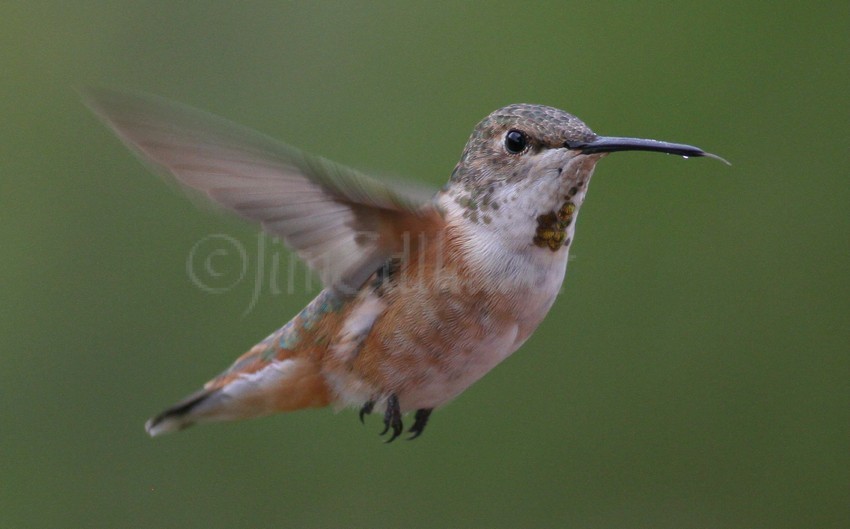
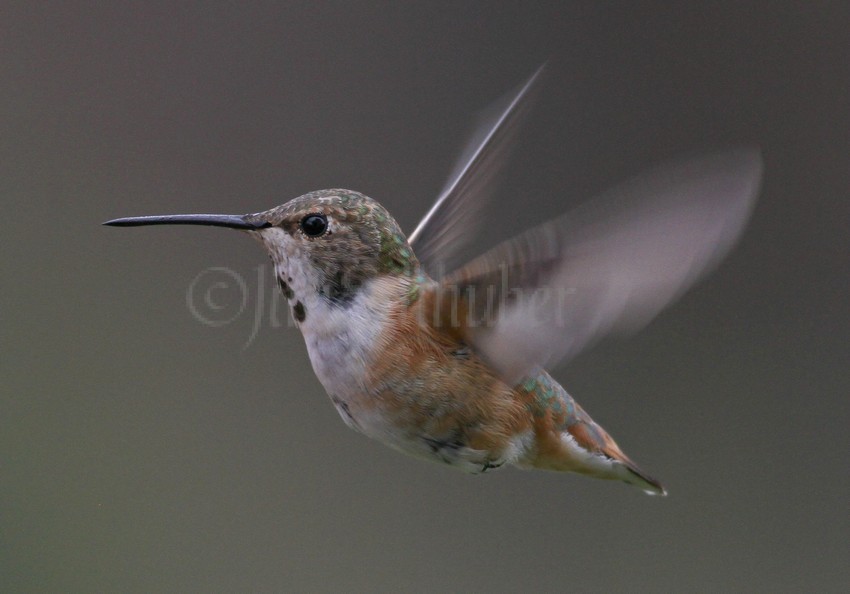
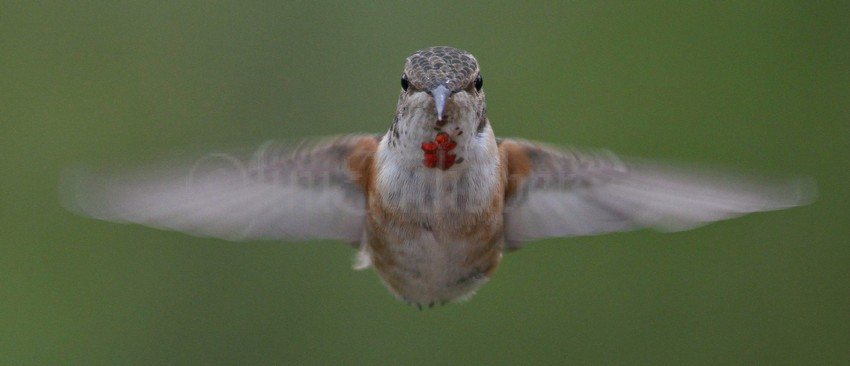
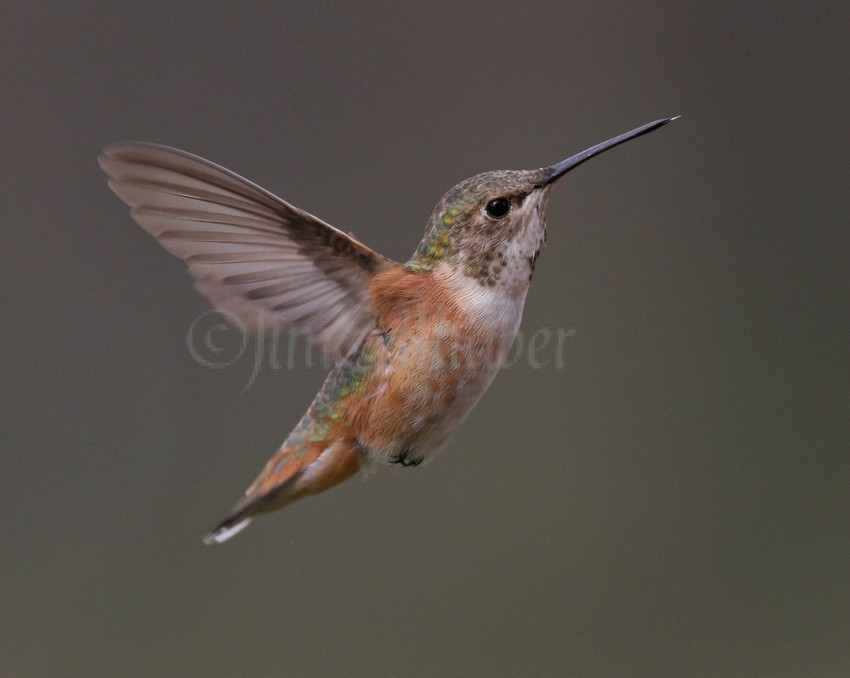
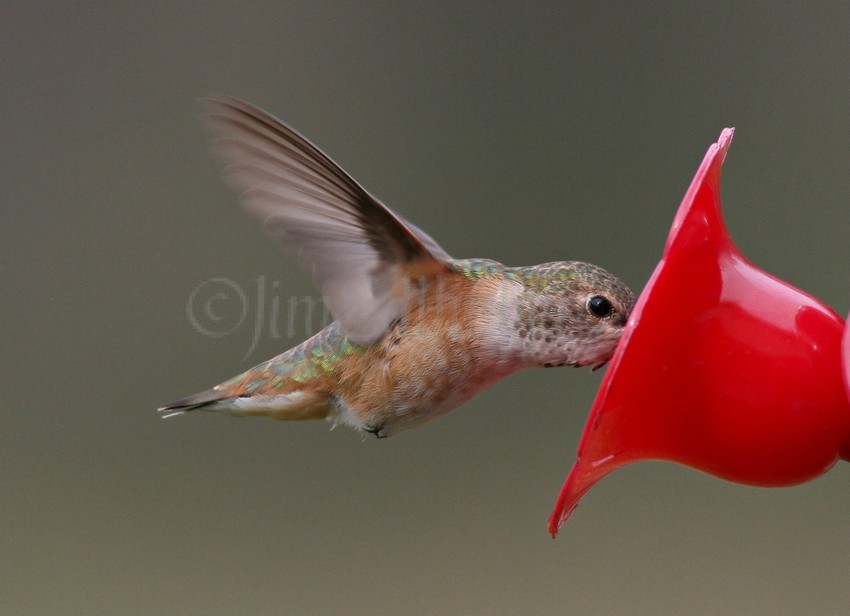
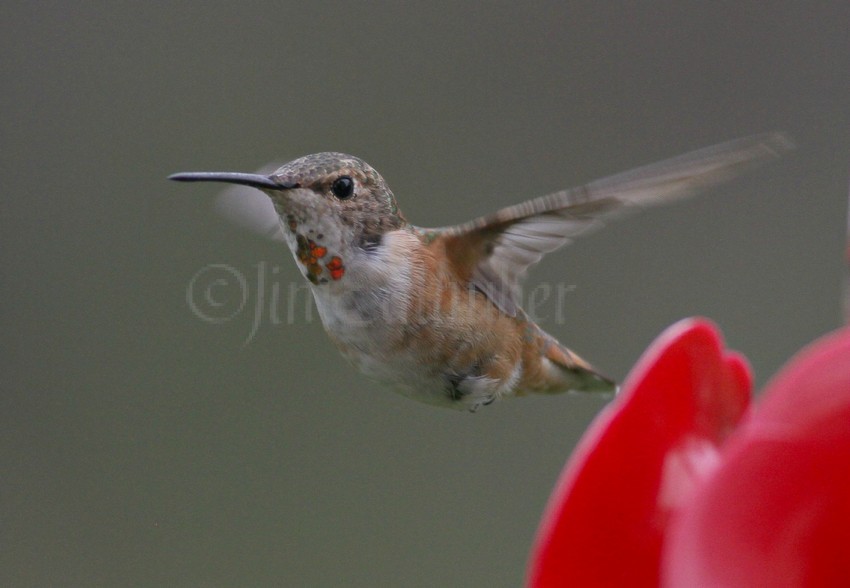
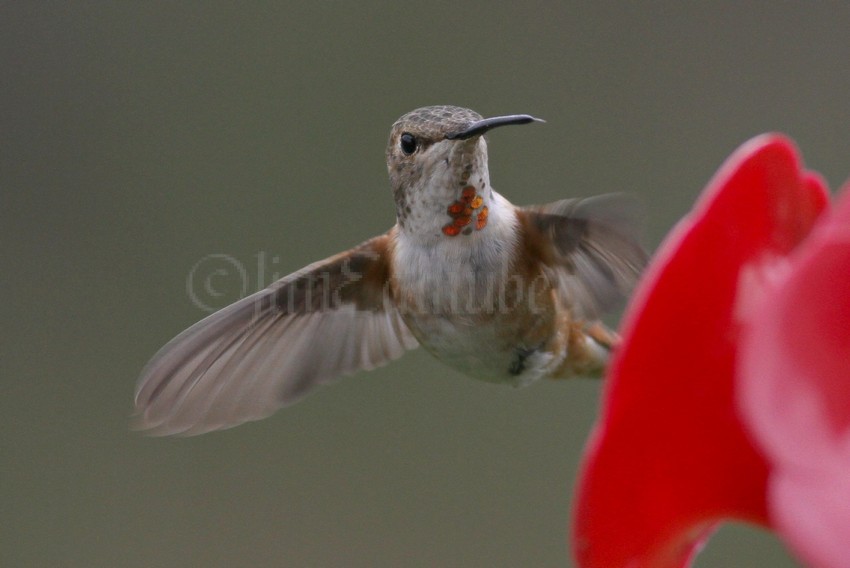
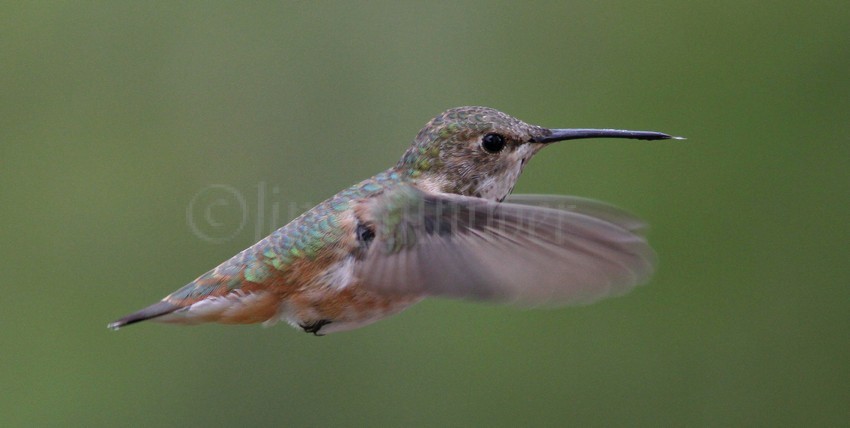
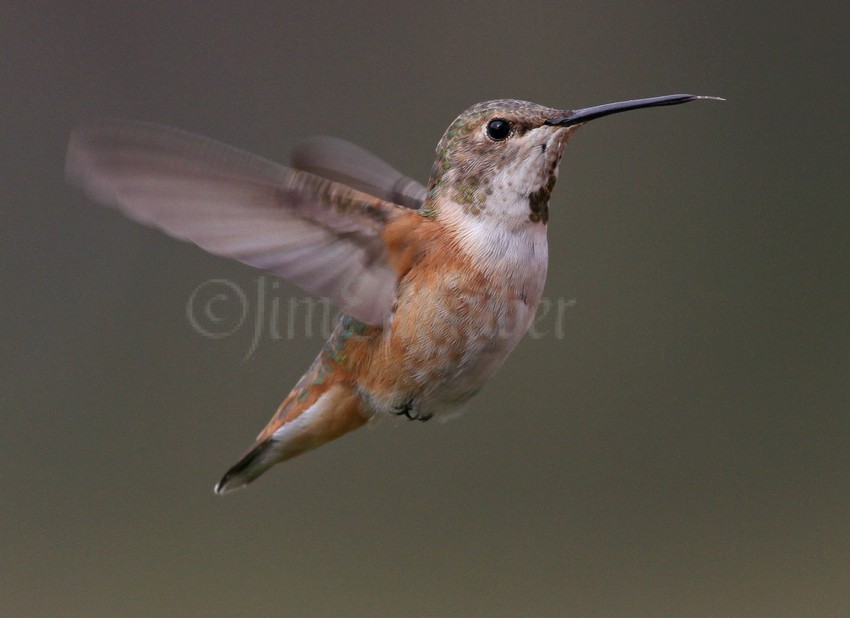
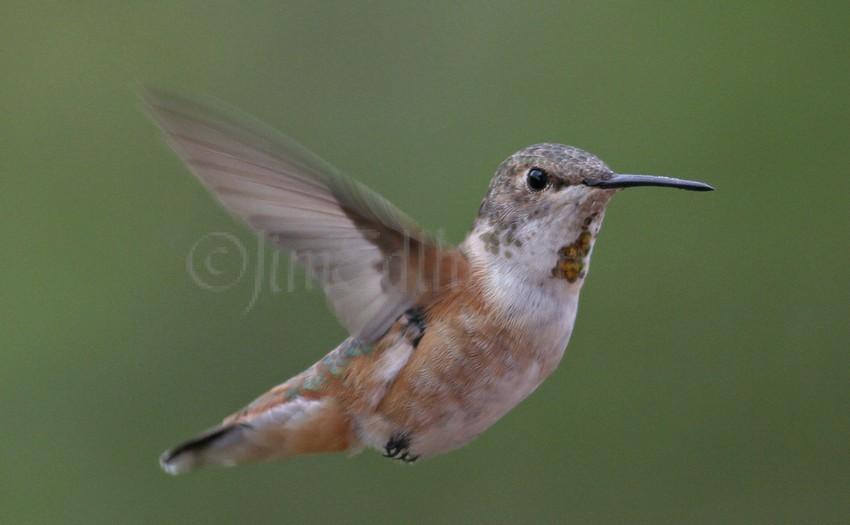
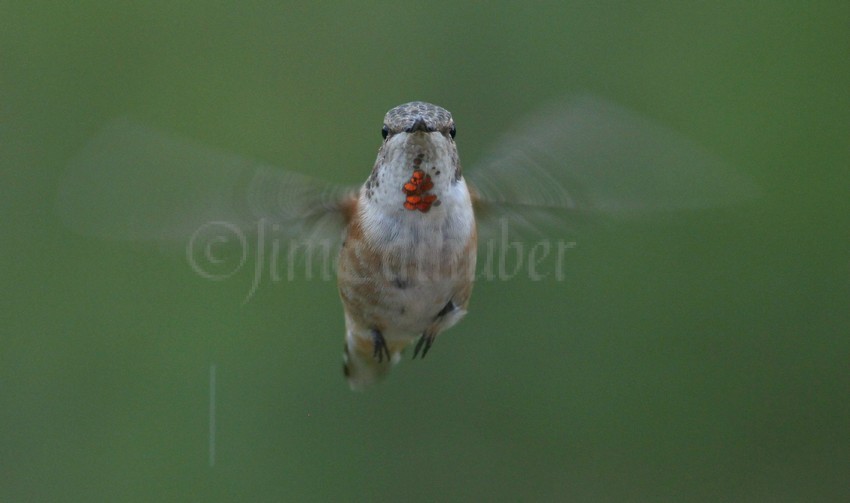
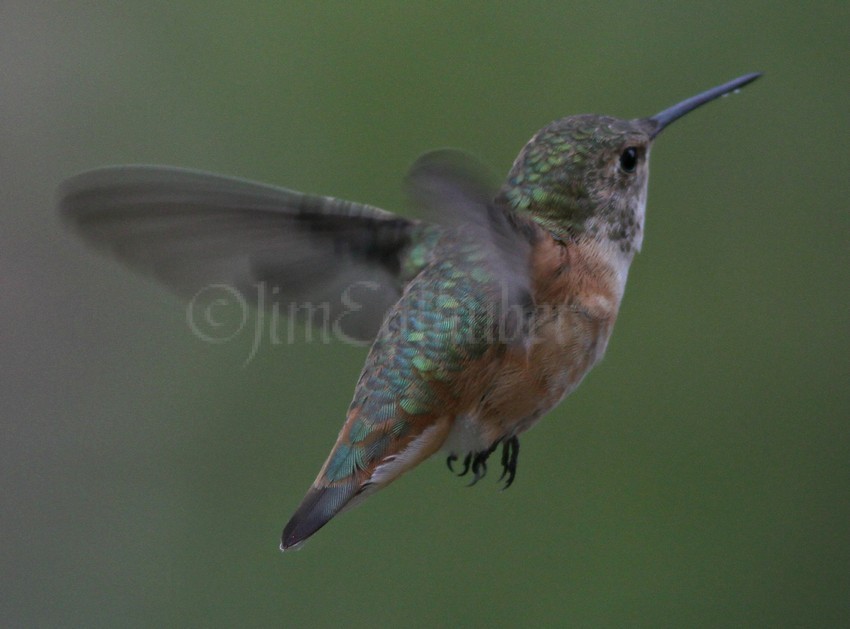
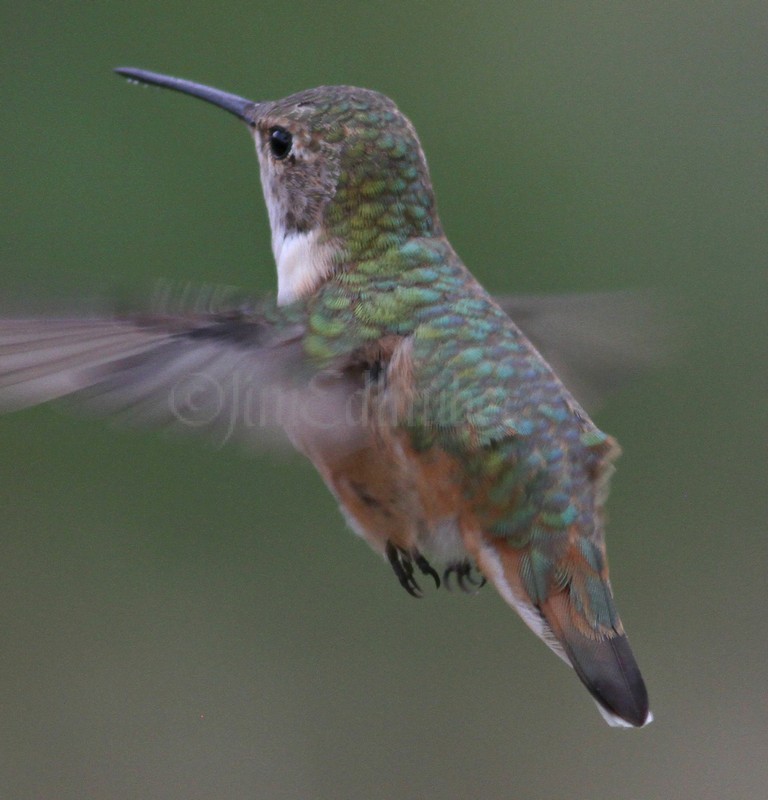
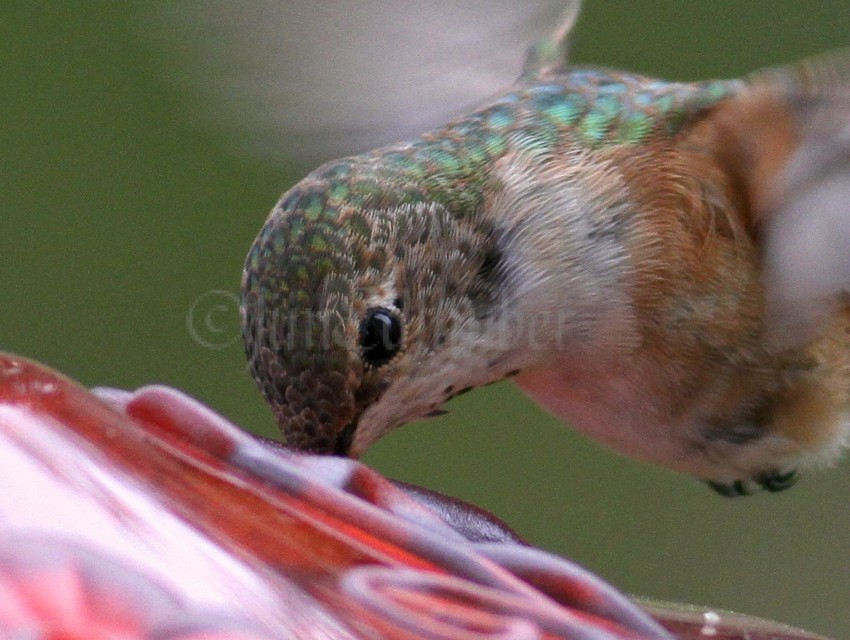
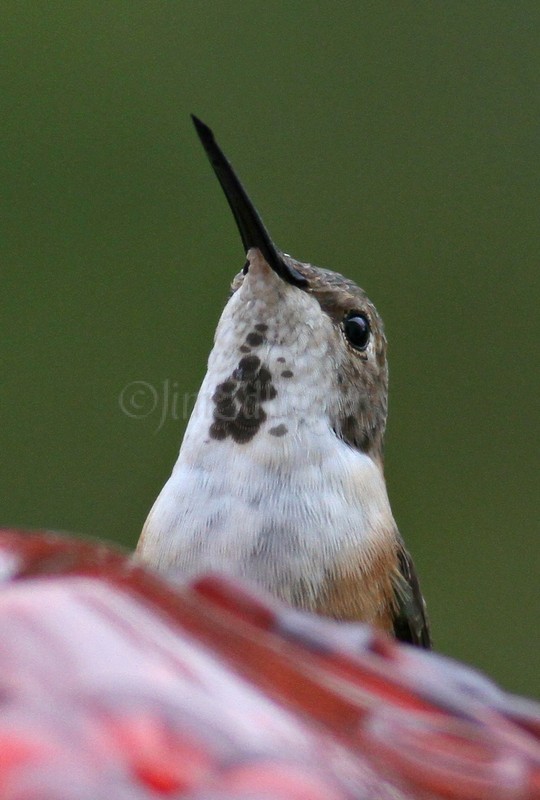
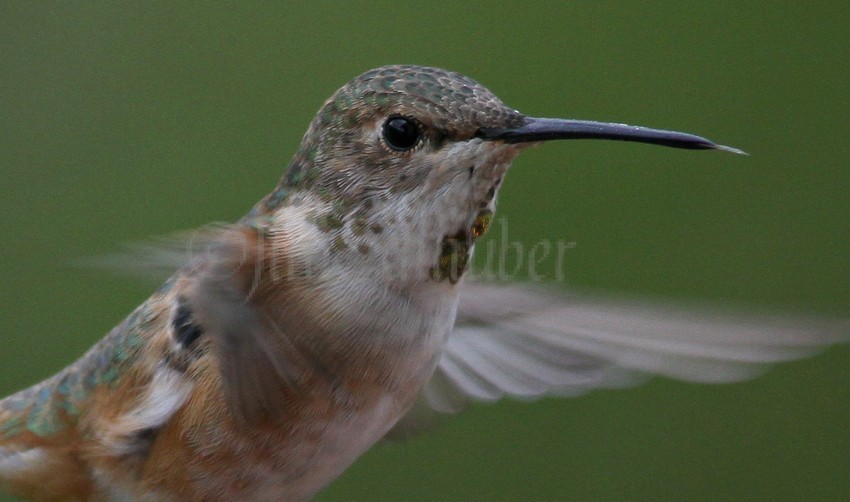
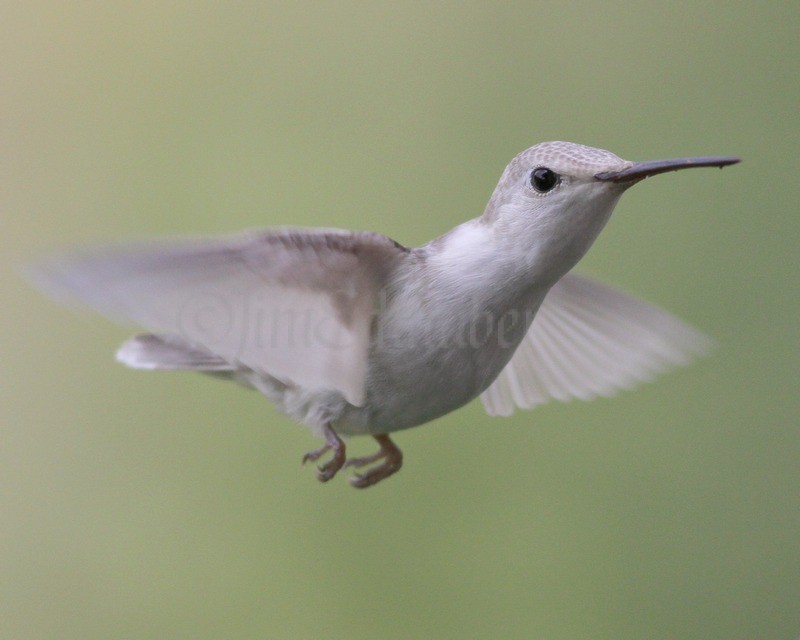
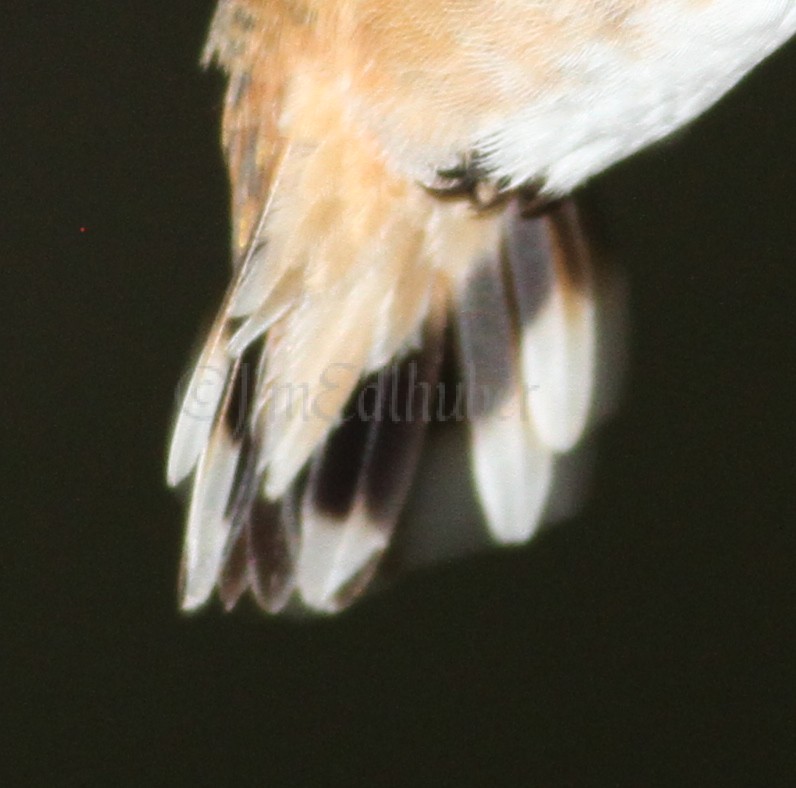
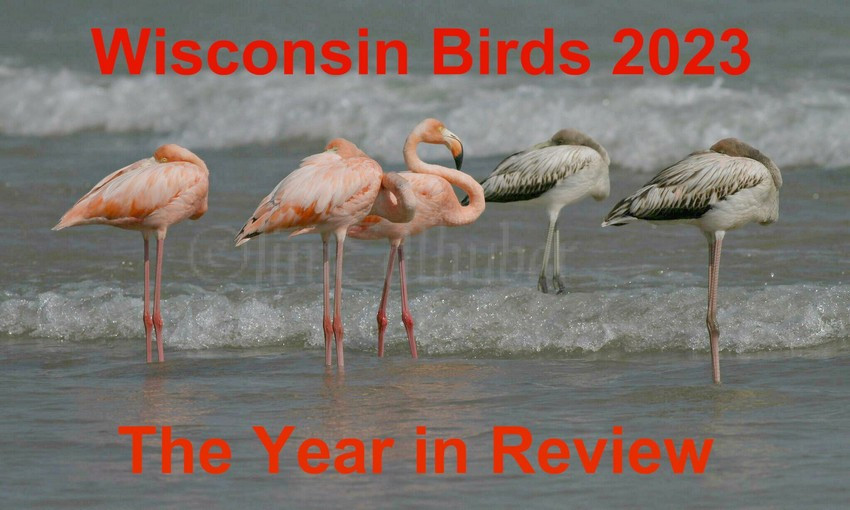
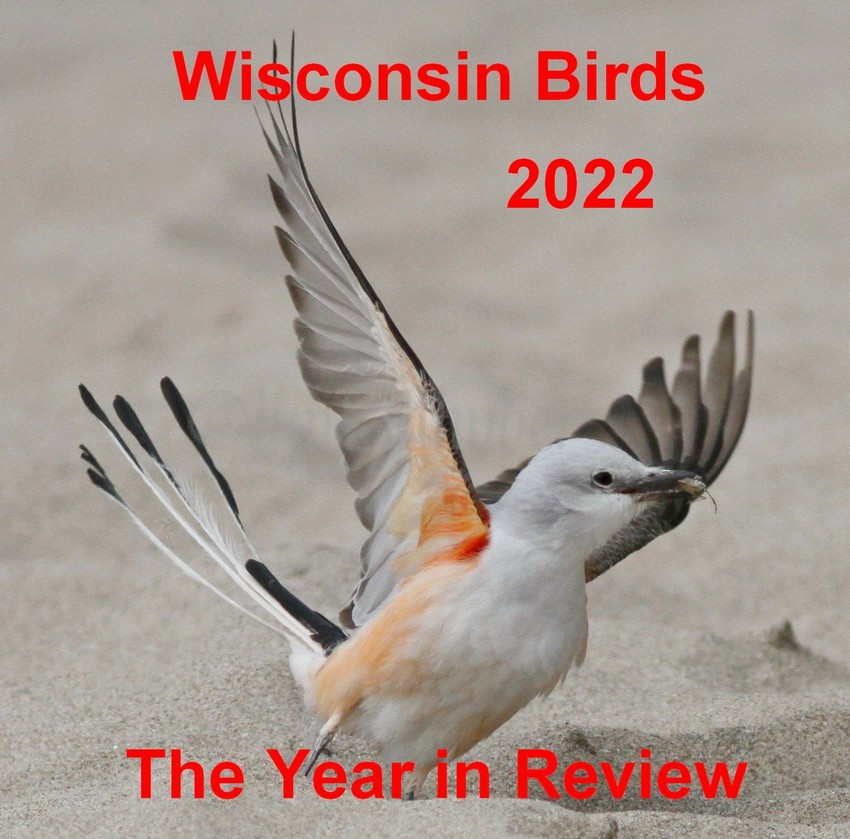
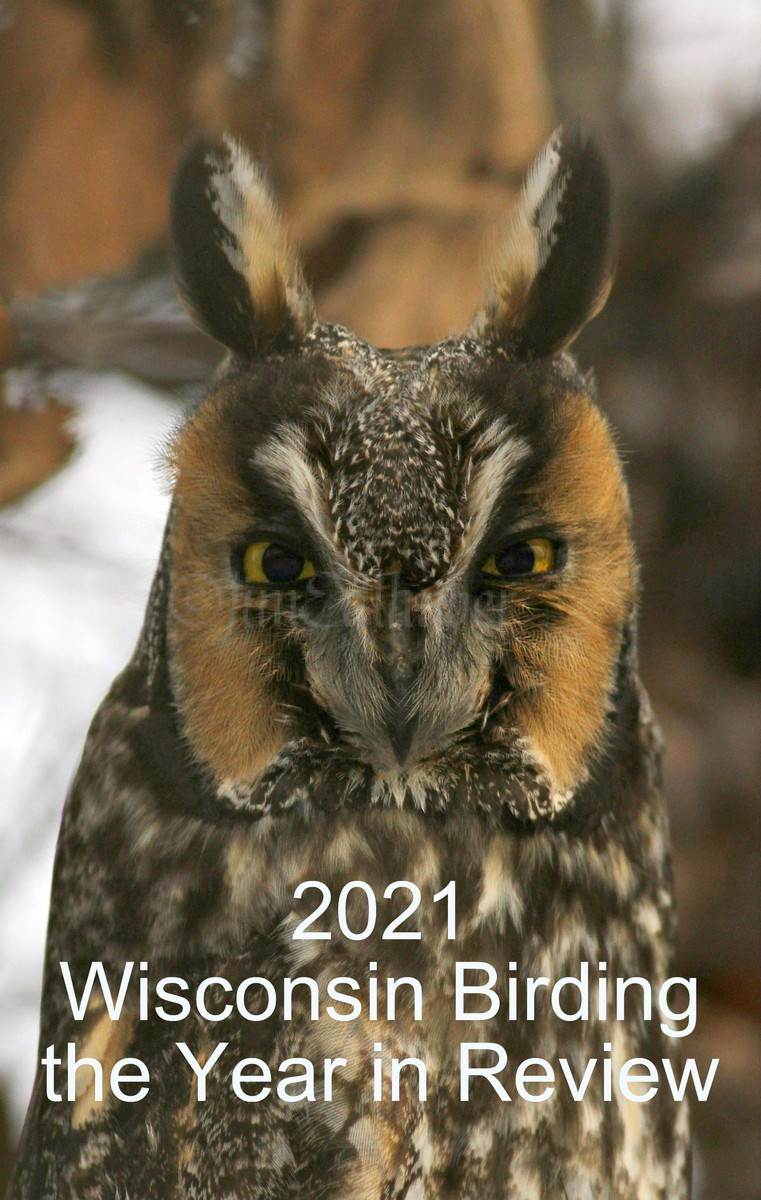
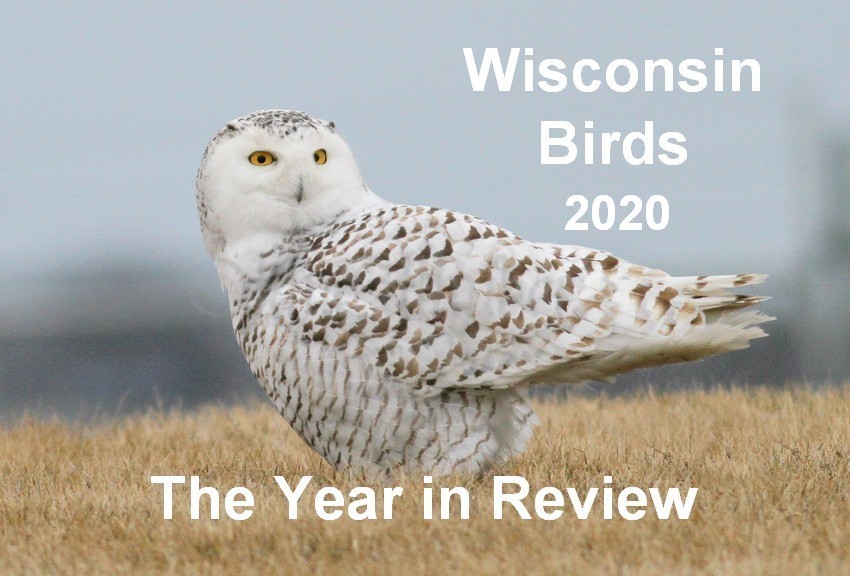
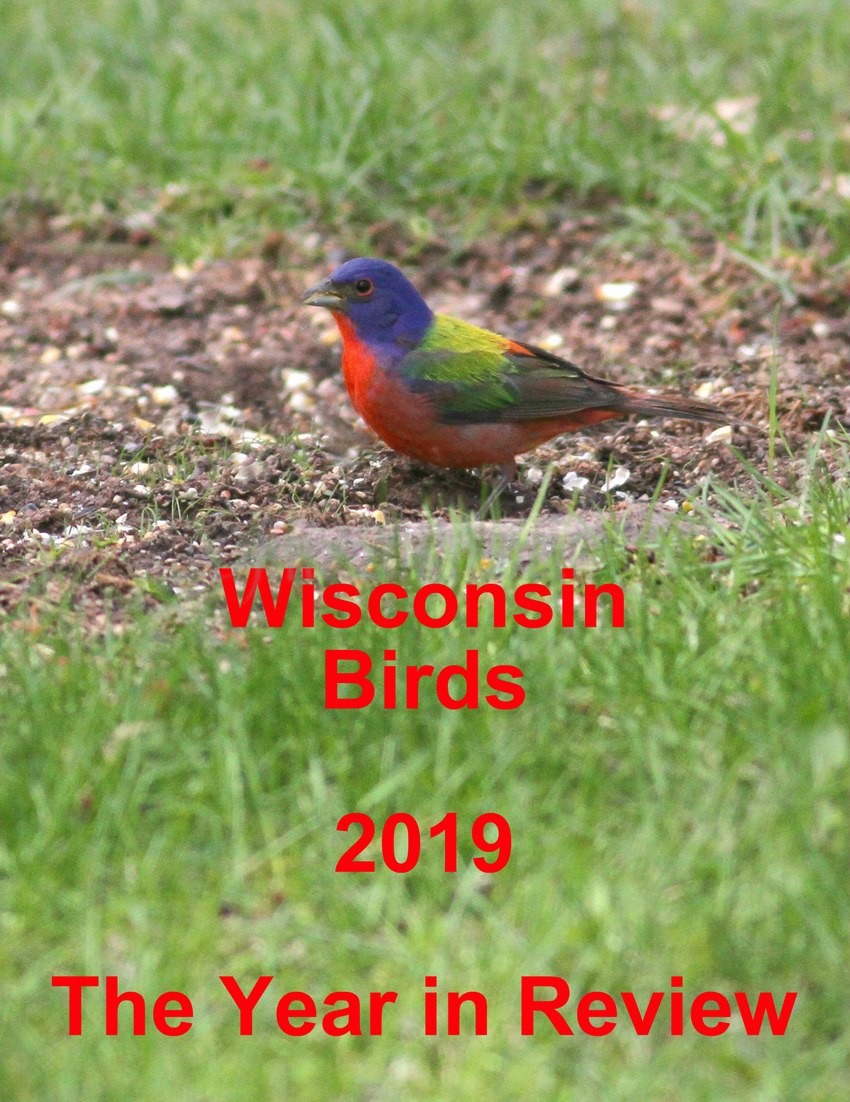
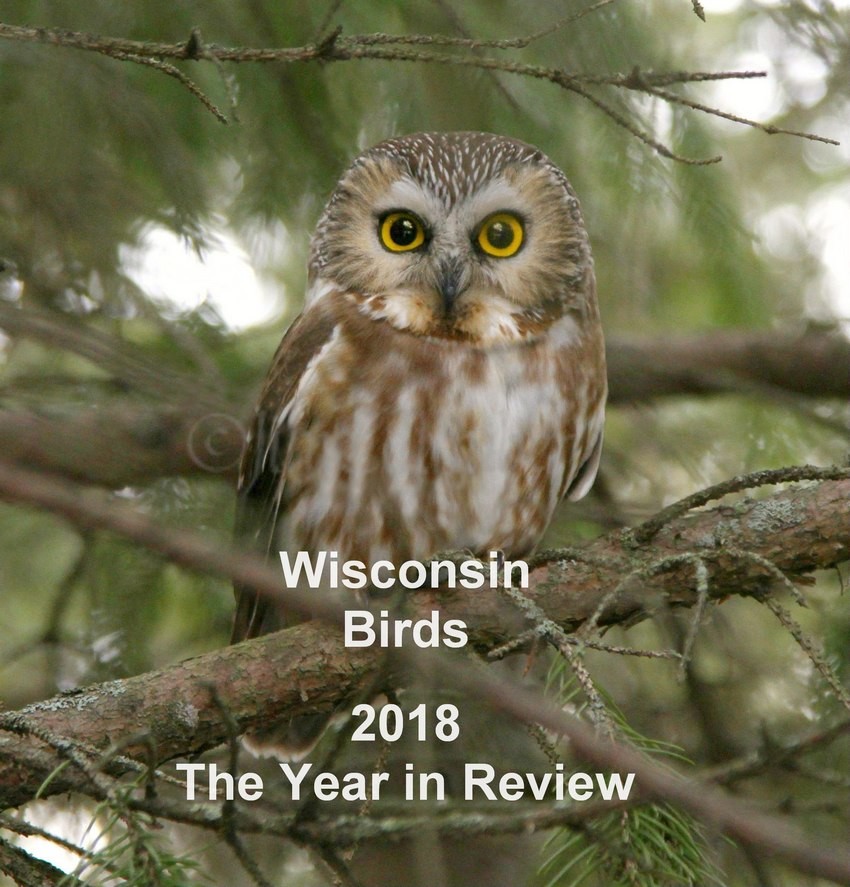
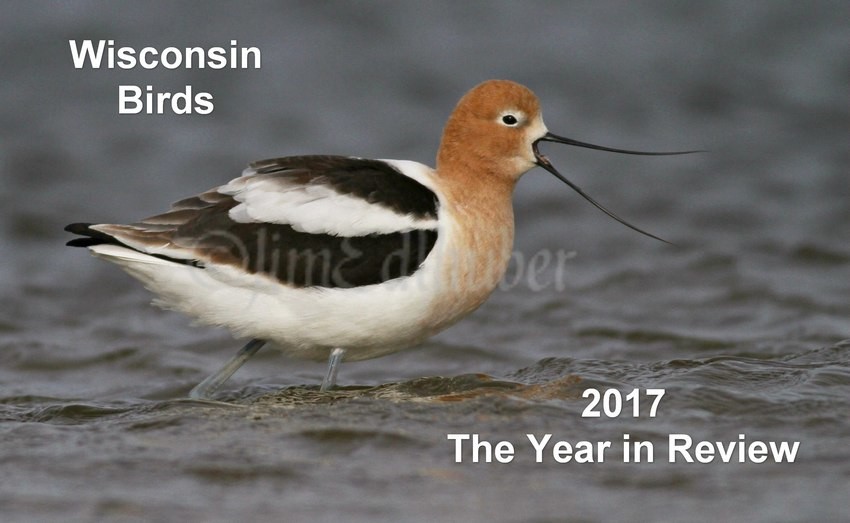
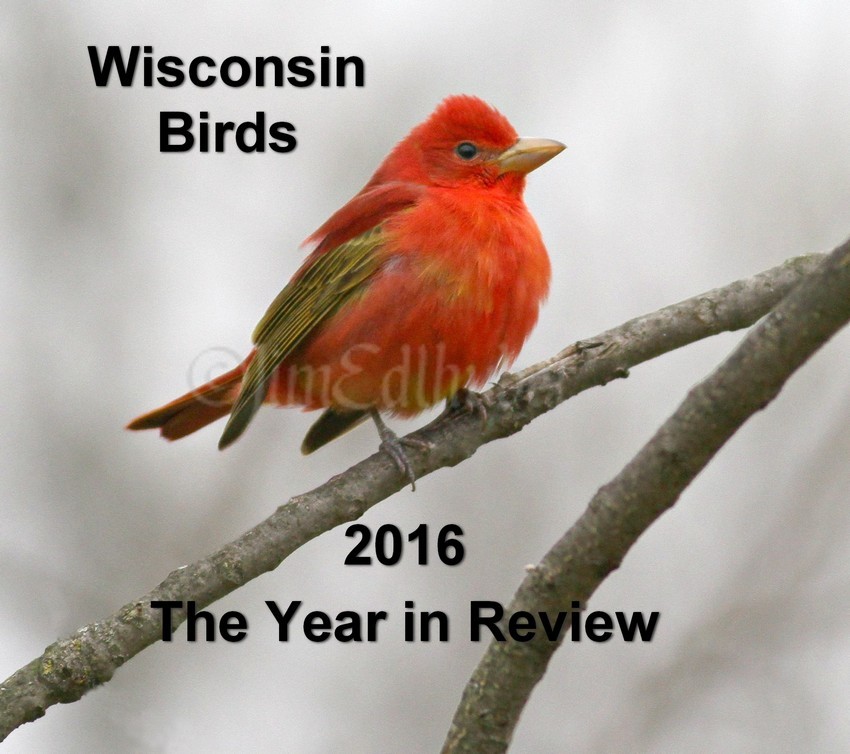
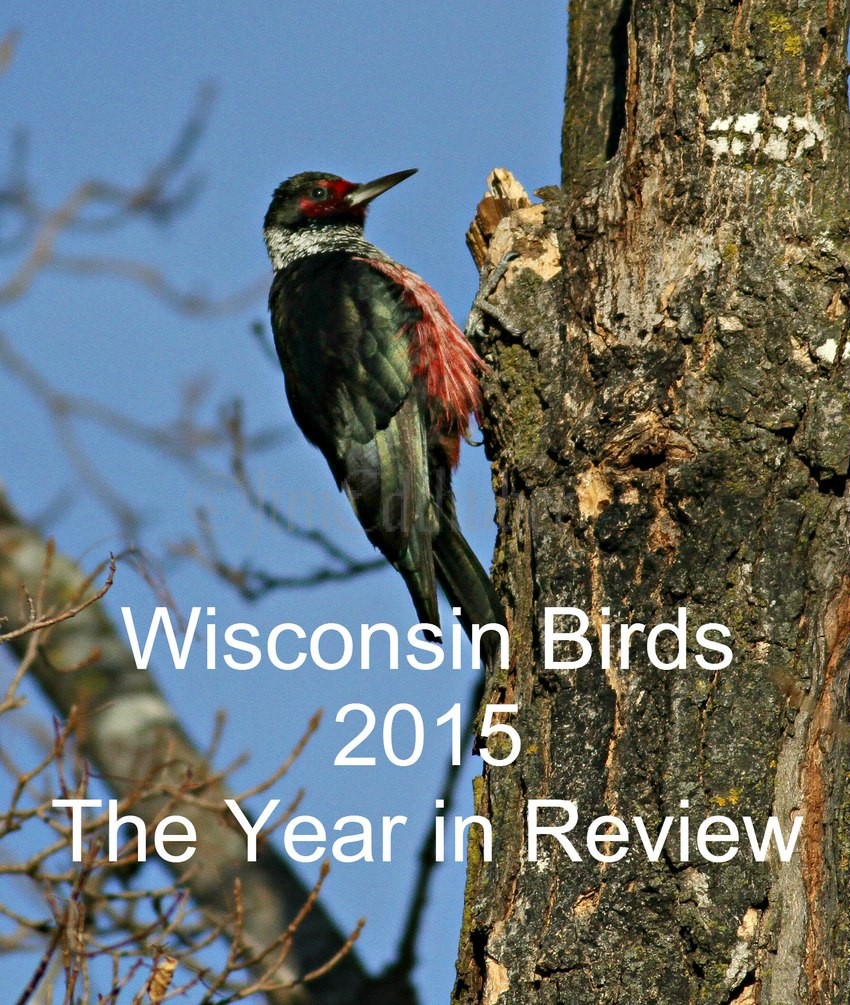
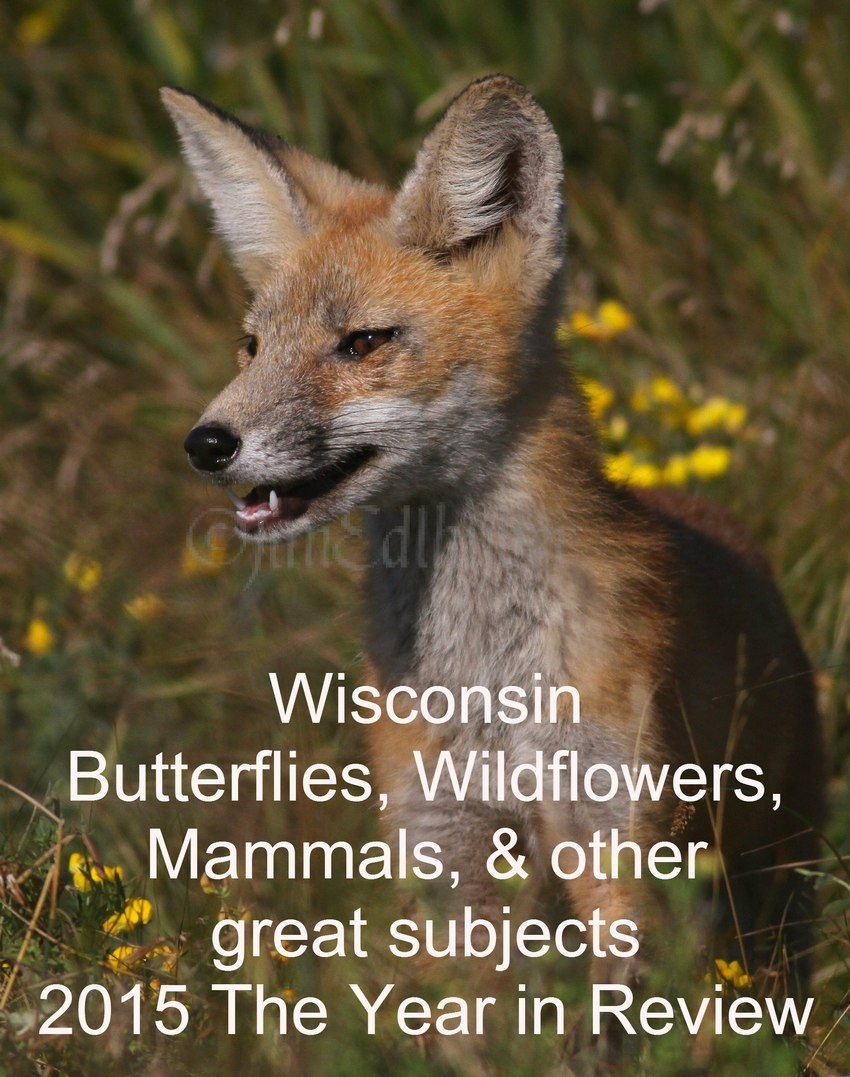
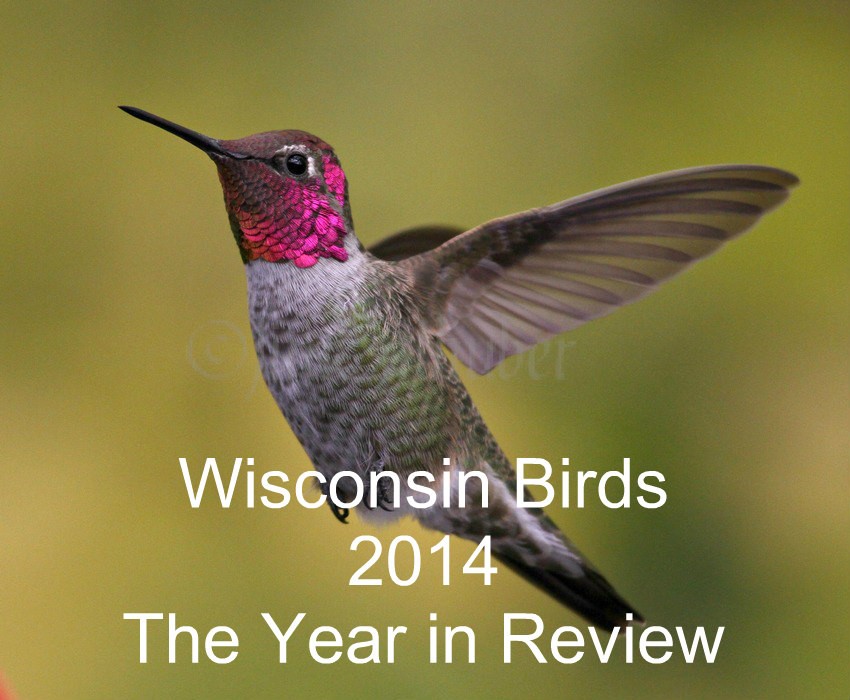
Beautiful bird – and beautiful image captures, Jim!!
What a beautiful and awesome series Jim.
Back to the Rufus! I guess the weather is cooperating to keep them around. Awesome photos and close up views. Thanks again for sharing.
Let red honeysuckle grow and any wild red-flowered plants. They are better than a bird feeder. I have so many red wild flowers in my yard and honeysuckle. I saw my first hummingbird today ! They are just beautiful and magical !